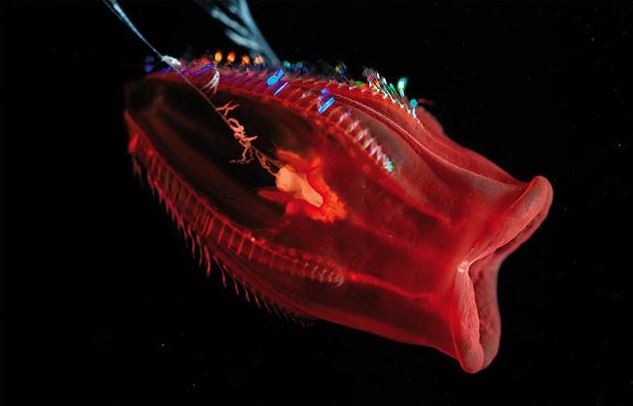
Comb Jellyfish
Comb jellyfish look different from other jellies, lacking the traditional bell and tentacles. Instead, its body is translucent and walnut-shaped with wart-like bumps. For this reason, it’s sometimes called a sea walnut. Comb jellies refract light, appearing to have rainbow colors running down their bodies on the track of internal moving cilia. They can also make their own light (bioluminescence), flashing when disturbed.
Comb jellies, also known as ctenophores, evolved more than 500 million years ago. They're among the earliest metazoans, a group comprised of all multicellular animals. At a maximum length of five inches, they have the distinction of being the largest animals to use cilia for locomotion. Ctenophores are found in all oceans of the world and have recently invaded the Black, Caspian and Baltic Seas, where they are considered pests because they consume fish larvae. The subject of this study was a comb jelly called Mnemiopsis leidyi that lives off the eastern seaboard, from Maine to Florida.


